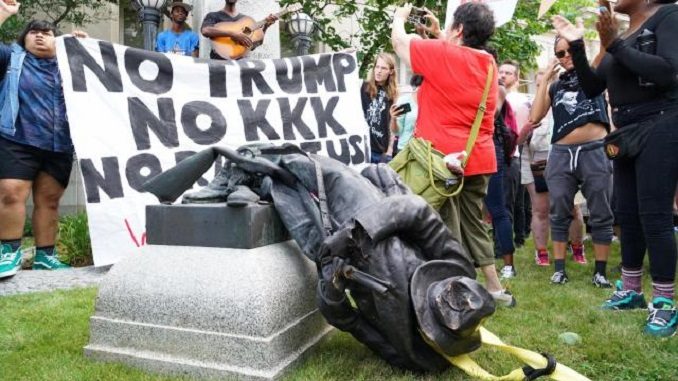
On June 4, Virginia Governor Ralph Northam announced that Richmond’s largest Confederate statue will be removed – one among the many statues in honor of the Confederacy that are being taken down in cities across the U.S., as thousands of people nationwide take to the streets to stand up against racial inequality and injustice, TIME reported.
The statues have proved divisive for communities for years. For some, they’ve symbolized heritage, but for many, many others, the statues have been a symbol of past and present racism in the U.S. Calls to remove them came once again at the forefront as thousands of people protest police brutality after the officer-involved killing of George Floyd in Minneapolis.
In response, many city leaders have decided to remove the statues. Some have already come down in Birmingham and Mobile, Ala.; Louisville, Ky.; Jacksonville, Fla.; and Alexandria, Va., among other places. Activists in many other cities are petitioning for their statues to be removed.
The statues have always been rooted in white supremacy, historians say. They were erected en masse through the southern U.S. in the late 19th Century, years after the Civil War ended, specifically as a reminder to African Americans that white people held power.
“It’s not just that the statues represent white supremacy, but the purpose of building the statues was the perpetuation of white supremacy,” James Grossman, executive director of the American Historical Association, tells TIME. “This is why they put them up in the first place; to affirm the centrality of white supremacy to Southern culture.”
In the last few years, amid the rise of the Black Lives Matter movement and the 2015 mass shooting of nine African Americans at the Mother Emanuel church in Charleston, S.C., a debate was sparked about whether the statues should remain in public spaces.
The statues became the centerpiece of protests, most infamously the “Unite the Right” rally in Charlottesville, Va., in 2017, during which white nationalists gathered to protest the city’s plan to remove a statue commemorating Confederate General Robert E. Lee, a protest that ended with one person killed and dozens injured.
“Activists and organizers and people who are part of these racial-justice movements, including young white people, recognize that we can’t change policing in America until we change the culture of America, and the culture of America has been deeply steeped in white supremacist celebration and racist norms, of which Confederate monuments are the most visible symbols,” says Khalil Gibran Muhammad, professor of history, race and public policy at Harvard University.
“The point of removing the monuments is to move from symbolism of racism to the substance of racism,” he adds.
A 2019 study by the Southern Poverty Law Center (SPLC) found 780 monuments dedicated to the Confederacy located in 23 states.




Be the first to comment